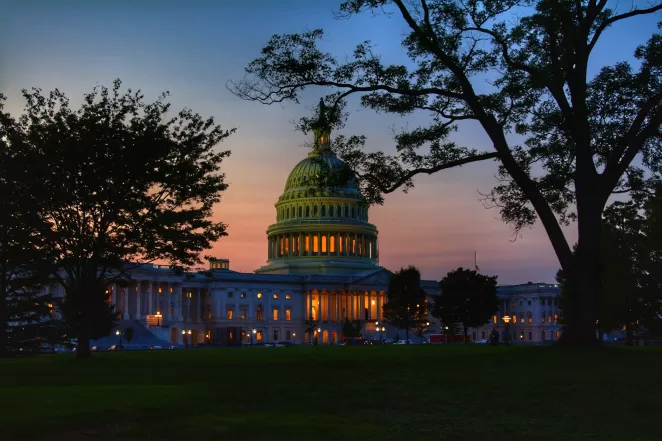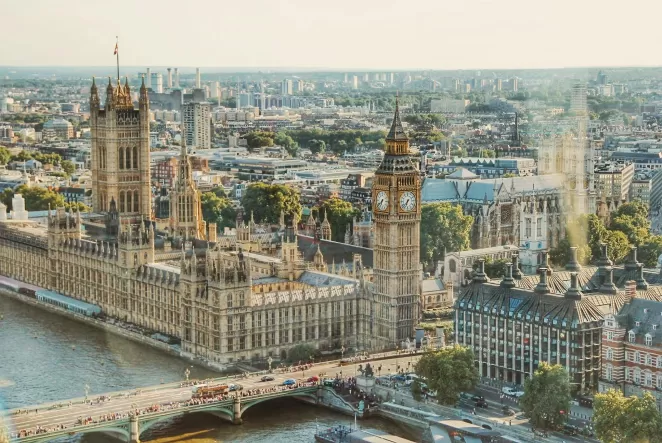The Hidden Climate Success in Minnesota’s New Transportation Law
Minnesota lawmakers passed a substantial transportation bill that includes dedicated funding for public transit and incorporates climate-smart targets into transportation planning.
By Kiley Kroh

Minnesota lawmakers proved that all policy can be climate policy with the passage of a substantial transportation funding bill that was signed by Goveror Tim Walz on Wednesday.
The sweeping measure addresses multiple transportation funding gaps across the state, and it also contains some key provisions that can boost the state’s overall climate action. These include dedicated funding for public transit and a new approach for viewing infrastructure needs through the broader lens of climate change.
“I’m thrilled that with this bill, not only are we fixing our roads and bridges and committing to ongoing investments in transit, we’re putting in place a climate smart system for planning and evolving our transportation infrastructure,” said state Rep. Larry Kraft.
The package represents the first long-term transit investment in 30 years and will make a real difference in the ability to achieve the state’s climate targets, said MJ Carpio, campaign manager with Move Minnesota.
“Climate targets are equity targets,” Carpio said. “Car-centric planning has created unequal access to opportunities, displaced communities, and destroyed green spaces. We hope that this progress will seed the future successes we urgently need around mobility justice, greater place connectivity, and conservation.”
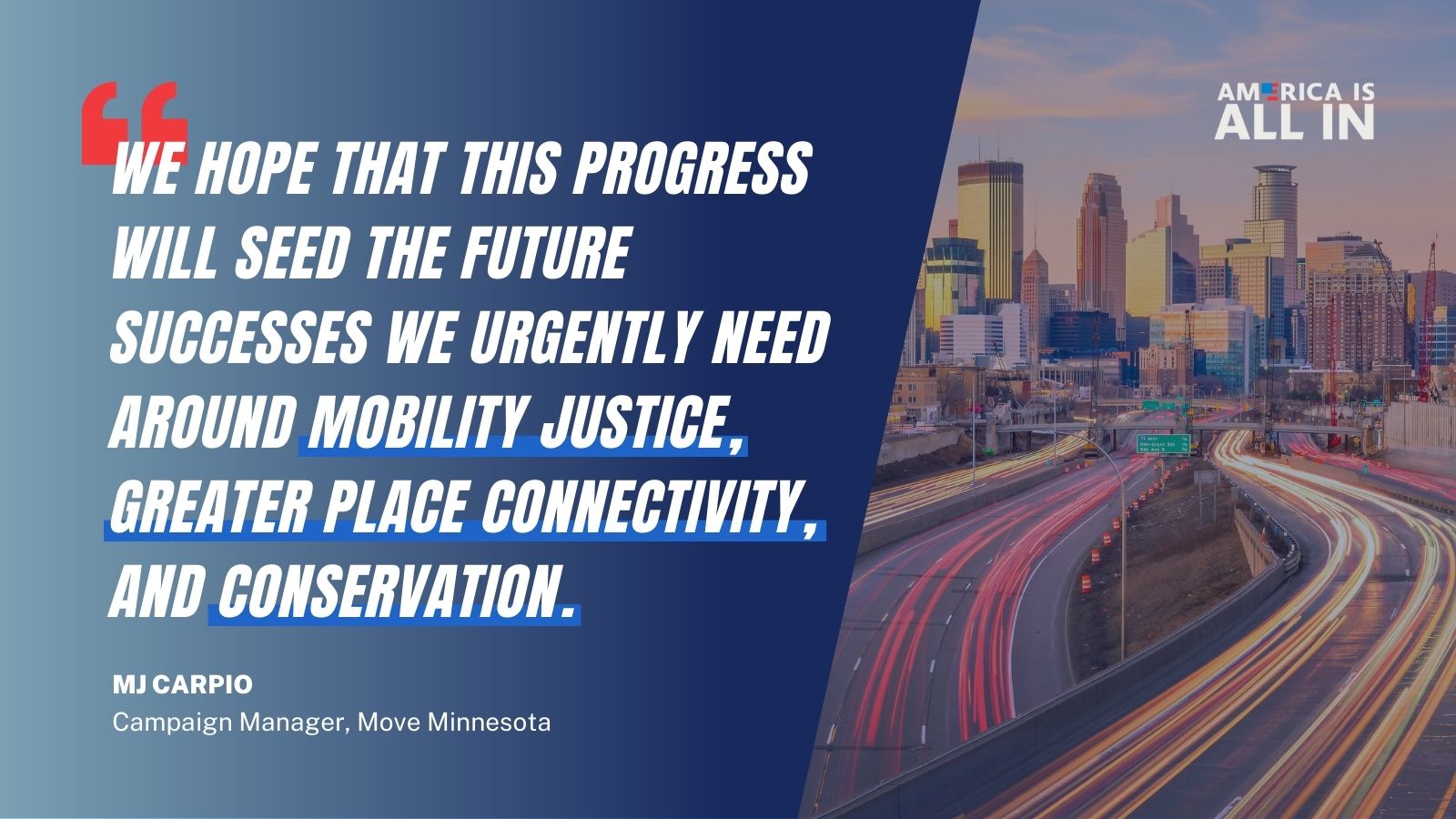
Transportation is key to climate goals
Like most states, transportation is the largest source of carbon emissions in Minnesota, accounting for roughly a quarter of the state’s overall emissions. The vast majority, over 70%, of the transportation emissions stem from passenger vehicles, including cars and both light-duty and heavy-duty trucks.
Reducing those emissions requires both a transition to electric vehicles and an investment in other modes of transportation. Minnesota’s new transportation funding law establishes a 0.75 percent metro-area sales tax on retail purchases in the seven counties of the Twin Cities that will generate a projected $440 million per year. Those funds will enable some meaningful changes to public transit, reducing wait times for buses and trains and accelerating the build-out of an electric bus system. A majority of residents supported an even higher sales tax, 1 cent, to fund metro-area transit, according to a statewide poll conducted earlier this year.
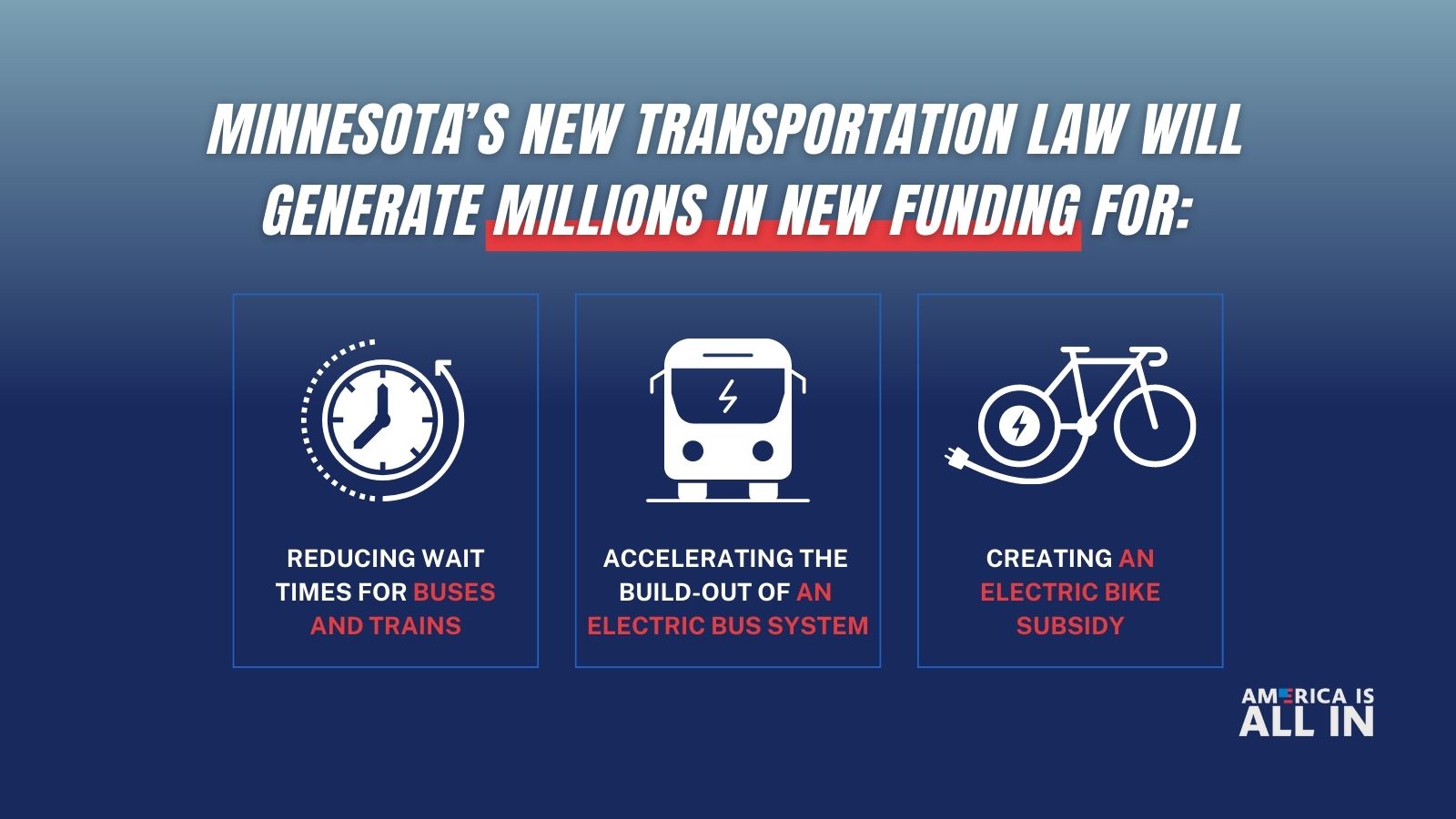
Research has shown these investments are smart economic policy, as well as climate. A $3.1 billion investment in the Minneapolis-St. Paul region’s transit system resulted in $9.05 billion in total direct positive impacts, according to a report from the Minneapolis Regional Chamber.
The new law also establishes a process for examining the greenhouse gas (GHG) emissions associated with a major new transit-related project, like a highway expansion, and requiring the mitigation of those emissions when needed. This will likely be an important forcing mechanism to expand and improve other modes of transportation beyond passenger vehicles and reduce the number of miles people have to drive.
This, too, could result in significant benefits for the North Star state. If the state achieves its goal of a 20% reduction in vehicle miles traveled (VMT) by 2050, it would result in $35 billion in savings for Minnesota households, according to recent RMI analysis. Meeting this target would also yield significant health benefits from reduced air pollution, as well as a reduction in car crashes and fatalities.
In late 2021, Colorado adopted a similar policy to quantify and reduce GHG emissions associated with surface transportation projects. According to the state, this new climate-centered planning process will help the state avoid 1.5 million tons of GHG pollution by 2030 – equivalent to taking 300,000 gas-powered cars off the road for a year. Above all else, “this rule recognizes that meaningfully addressing climate change requires the use of every tool available.”
Expanding climate-friendly transit across the state
The policies and funding contained in Minnesota’s new transportation law are an important complement to the small and large scale efforts currently underway across the state.

Artist June Le finishes "a self-portrait of Rochester,” a mural which prominently features bicyclists as central to community mobility. Image courtesy of Zoe Cinel, Rochester Art Center.
The City of Rochester has made climate action a priority, recently strengthening its emissions reduction goals and aiming to cut carbon pollution 50% by 2030 and 100% by 2050. Rochester’s utility is already moving to 100% renewable electricity by 2030, leaving buildings and transportation as key emissions sources to tackle, said Lauren Jensen, Rochester’s sustainability coordinator.
The city is tackling transportation on several fronts with electric bikes and scooters, a new bus rapid transit line, and an EV infrastructure plan identifying priority areas for charging. As the home of the renowned Mayo Clinic, some city officials see their transportation-related goals as both a climate and health priority. “There are some people who care about this for climate change, some people who care about it for cost and effectiveness of movability, and health is a really important piece of this, too,” shared Jensen.
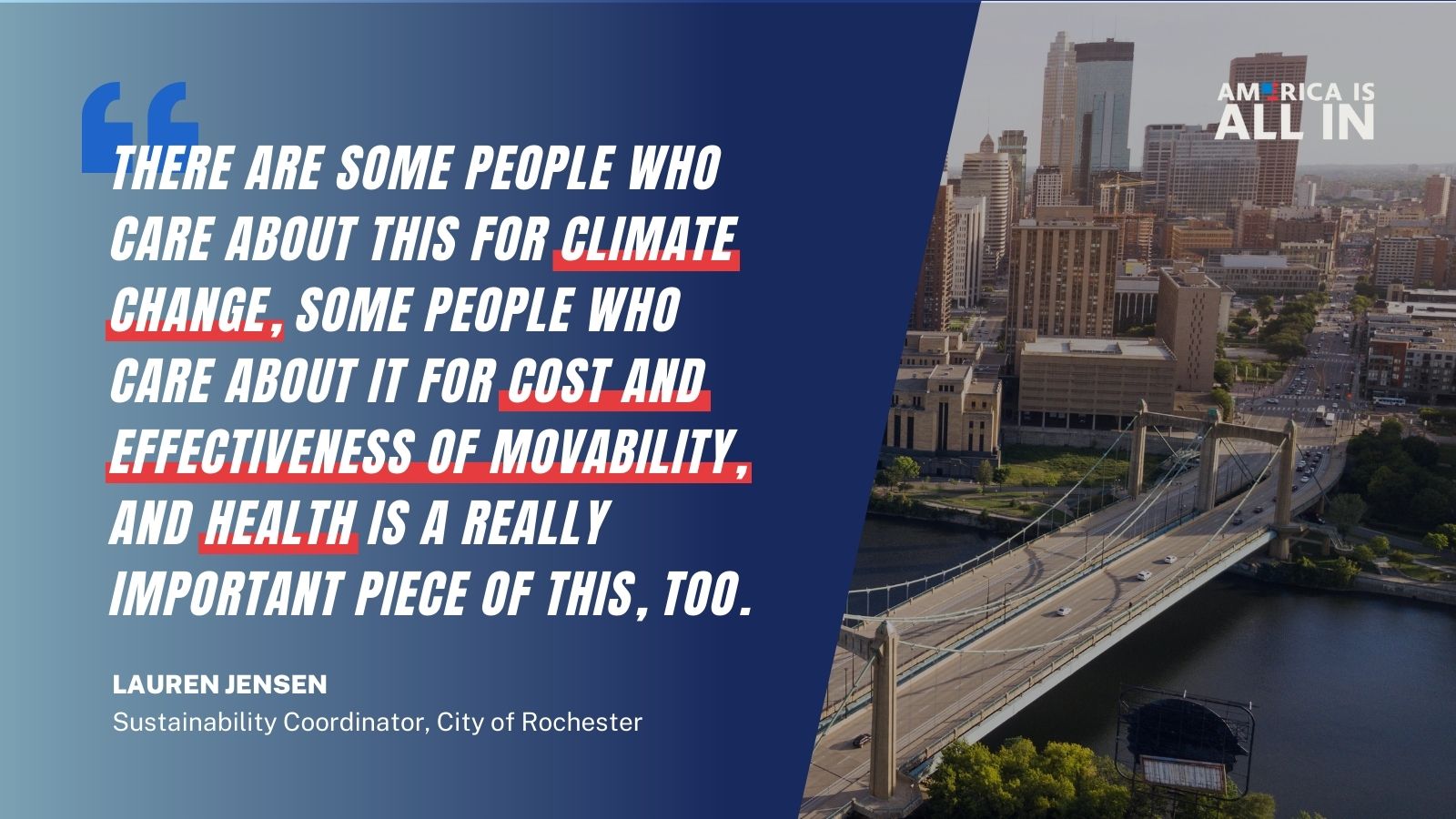
While change can be hard, particularly with so many people reliant on gas-powered cars, Jensen is encouraged by several signs of progress. First, she’s hearing a lot more interest in EVs, both internally from department fleet managers and in the broader community. She pointed to the fact that Olmstead County recently surpassed 1,000 registered EVs. And the influx of federal funds from major laws like the Bipartisan Infrastructure Law and Inflation Reduction Act means cities like Rochester have far more tools at their disposal.
“Funding is always a concern, especially for smaller cities,” said Jensen. “As overwhelming as it is, it’s so great to have more opportunities available to us with this national momentum.”

Latest
More articles >